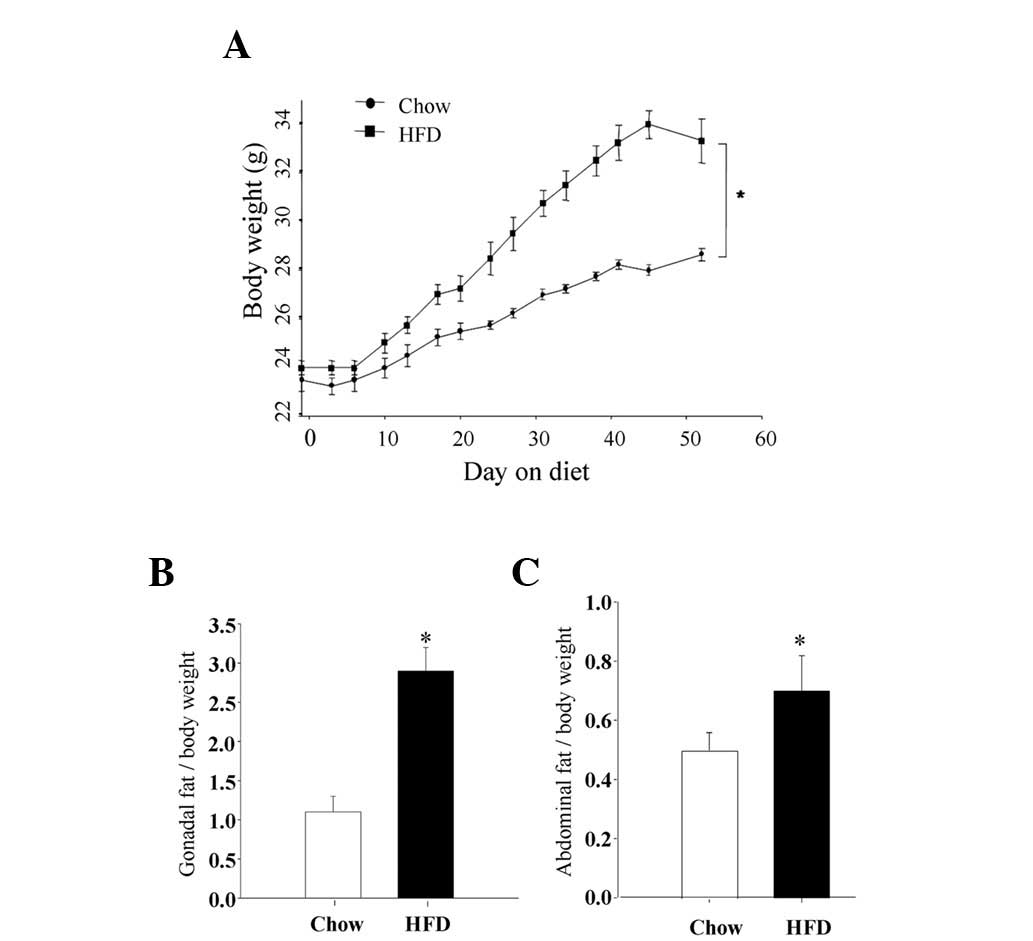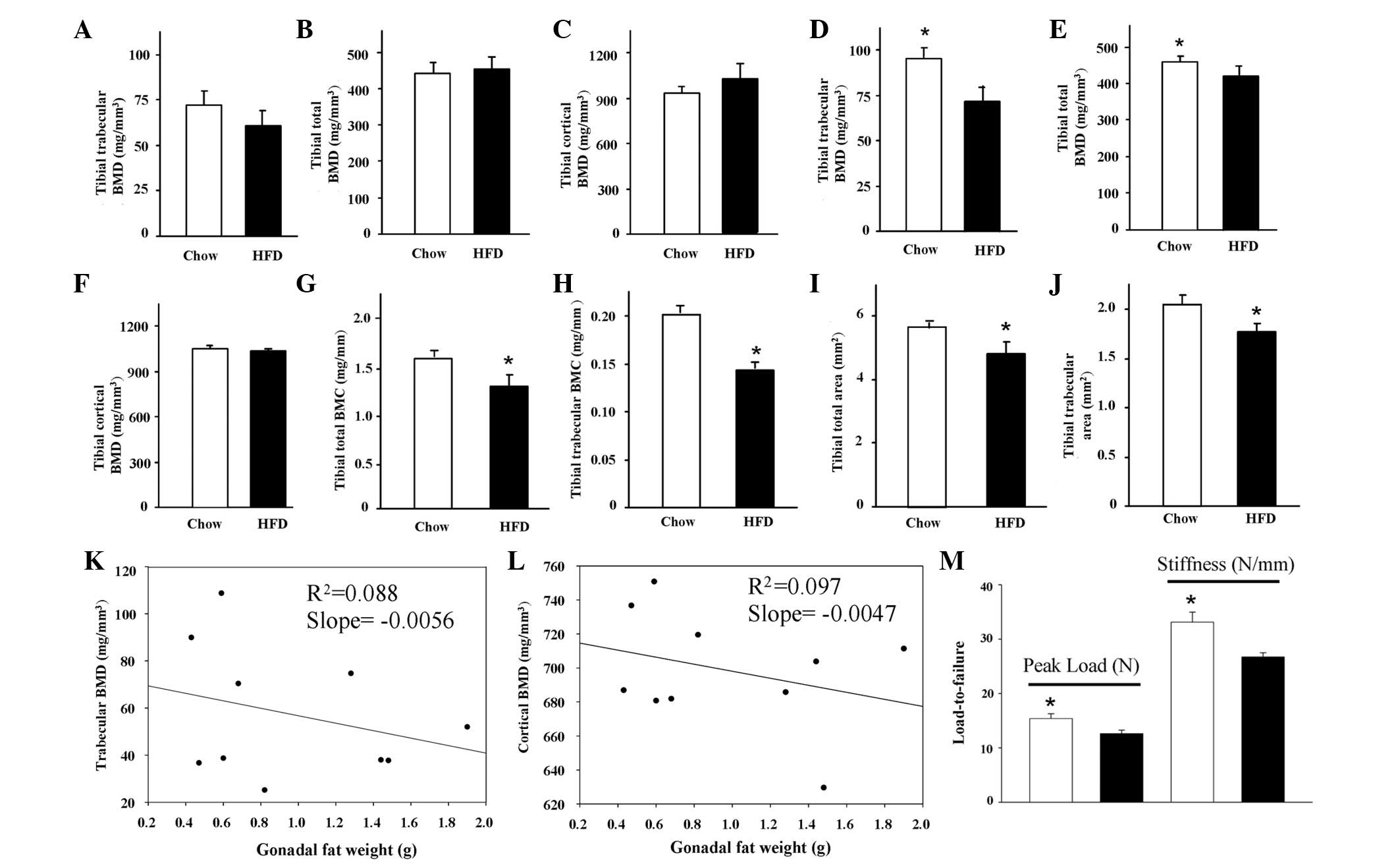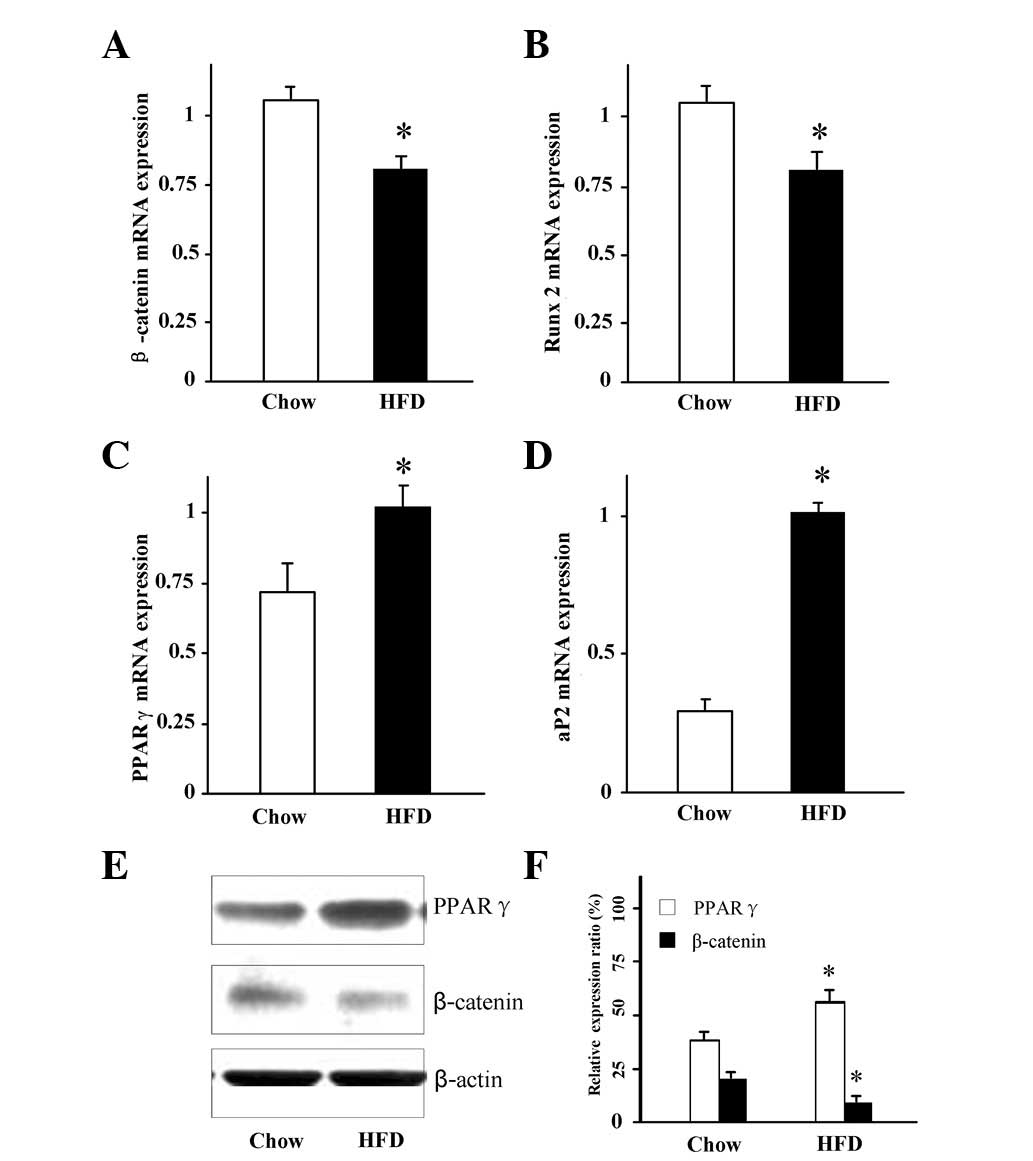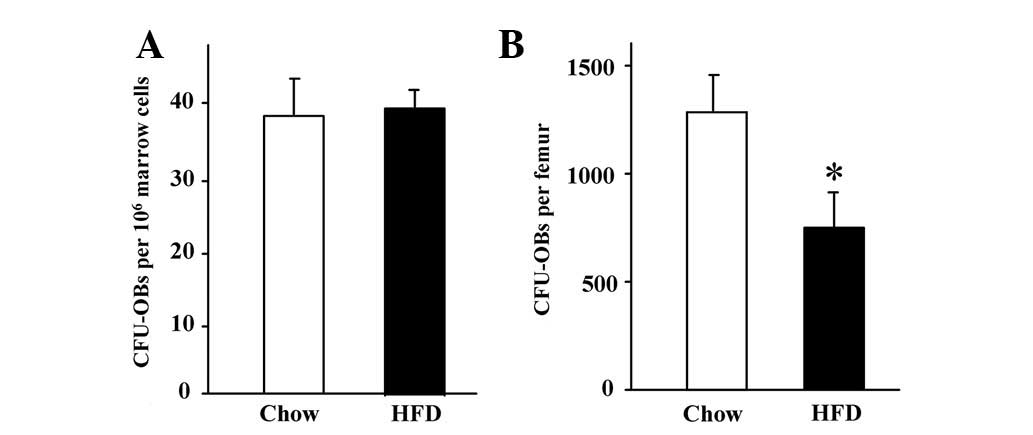|
1
|
Faeh D, Braun J, Tarnutzer S and Bopp M:
Obesity but not overweight is associated with increased mortality
risk. Eur J Epidemiol. 26:647–655. 2011. View Article : Google Scholar : PubMed/NCBI
|
|
2
|
Ritchie LD, Ivey SL, Woodward-Lopez G and
Crawford PB: Alarming trends in pediatric overweight in the United
States. Soz Preventivmed. 48:168–177. 2003. View Article : Google Scholar : PubMed/NCBI
|
|
3
|
Weiler HA, Janzen L, Green K, Grabowski J,
Seshia MM and Yuen KC: Percentage body fat and bone mass in healthy
Canadian females 10 to 19 years of age. Bone. 27:203–207.
2000.PubMed/NCBI
|
|
4
|
Taylor ED, Theim KR, Mirch MC, et al:
Orthopedic complications of overweight in children and adolescents.
Pediatrics. 117:2167–2174. 2006. View Article : Google Scholar : PubMed/NCBI
|
|
5
|
Zhao LJ, Liu YJ, Liu PY, Hamilton J,
Recker RR and Deng HW: Relationship of obesity with osteoporosis. J
Clin Endocrinol Metab. 92:1640–1646. 2007. View Article : Google Scholar : PubMed/NCBI
|
|
6
|
Reinwald S and Weaver CM: Soy isoflavones
and bone health: a double-edged sword? J Nat Prod. 69:450–459.
2006. View Article : Google Scholar : PubMed/NCBI
|
|
7
|
Reid IR: Relationships among body mass,
its components and bone. Bone. 31:547–555. 2002.PubMed/NCBI
|
|
8
|
Leonard MB, Shults J, Wilson BA,
Tershakovec AM and Zemel BS: Obesity during childhood and
adolescence augments bone mass and bone dimensions. Am J Clin Nutr.
80:514–523. 2004.PubMed/NCBI
|
|
9
|
Zhao LJ, Jiang H, Papasian CJ, Maulik D,
Drees B, Hamilton J and Deng HW: Correlation of obesity and
osteoporosis: effect of fat mass on the determination of
osteoporosis. J Bone Miner Res. 23:17–29. 2008. View Article : Google Scholar : PubMed/NCBI
|
|
10
|
Cao JJ, Gregoire BR and Gao H: High-fat
diet decreases cancellous bone mass but has no effect on cortical
bone mass in the tibia in mice. Bone. 44:1097–1104. 2009.
View Article : Google Scholar : PubMed/NCBI
|
|
11
|
Chan G and Chen CT: Musculoskeletal
effects of obesity. Curr Opin Pediatr. 21:65–70. 2009. View Article : Google Scholar
|
|
12
|
Krishnan V, Bryant HU and MacDougald OA:
Regulation of bone mass by Wnt signaling. J Clin Invest.
116:1202–1209. 2006. View
Article : Google Scholar : PubMed/NCBI
|
|
13
|
Smas CM, Chen L, Zhao L, Latasa MJ and Sul
HS: Transcriptional repression of pref-1 by glucocorticoids
promotes 3T3-L1 adipocyte differentiation. J Biol Chem.
274:12632–12641. 1999. View Article : Google Scholar : PubMed/NCBI
|
|
14
|
Reeves PG, Nielsen FH and Fahey GC Jr:
AIN-93 purified diets for laboratory rodents: final report of the
American Institute of Nutrition ad hoc writing committee on the
reformulation of the AIN-76A rodent diet. J Nutr. 123:1939–1951.
1993.PubMed/NCBI
|
|
15
|
Chen JR, Lazarenko OP, Wu X, et al:
Obesity reduces bone density associated with activation of PPARγ
and suppression of Wnt/β-catenin in rapidly growing male rats. PLoS
One. 5:e137042010.PubMed/NCBI
|
|
16
|
Chen JR, Lazarenko OP, Wu X, et al:
Dietary-induced serum phenolic acids promote bone growth via p38
MAPK/β-catenin canonical Wnt signaling. J Bone Miner Res.
25:2399–2411. 2010.PubMed/NCBI
|
|
17
|
Di Gregorio GB, Yamamoto M, Ali AA, Abe E,
Roberson P, Manolagas SC and Jilka RL: Attenuation of the
self-renewal of transit-amplifying osteoblast progenitors in the
murine bone marrow by 17 beta-estradiol. J Clin Invest.
107:803–812. 2001.PubMed/NCBI
|
|
18
|
Chen JR, Lazarenko OP, Haley RL, Blackburn
ML, Badger TM and Ronis MJ: Ethanol impairs estrogen receptor
signaling resulting in accelerated activation of senescence
pathways, whereas estradiol attenuates the effects of ethanol in
osteoblasts. J Bone Miner Res. 24:221–230. 2009. View Article : Google Scholar
|
|
19
|
Kyung TW, Lee JE, Phan TV, Yu R and Choi
HS: Osteoclastogenesis by bone marrow-derived macrophages is
enhanced in obese mice. J Nutr. 139:502–506. 2009. View Article : Google Scholar : PubMed/NCBI
|
|
20
|
Premaor MO, Pilbrow L, Tonkin C, Parker RA
and Compston J: Obesity and fractures in postmenopausal women. J
Bone Miner Res. 25:292–297. 2010. View Article : Google Scholar : PubMed/NCBI
|
|
21
|
Felson DT, Zhang Y, Hannan MT and Anderson
JJ: Effects of weight and body mass index on bone mineral density
in men and women: the Framingham study. J Bone Miner Res.
8:567–573. 1993. View Article : Google Scholar : PubMed/NCBI
|
|
22
|
Akridge M, Hilgers KK, Silveira AM, Scarfe
W, Scheetz JP and Kinane DF: Childhood obesity and skeletal
maturation assessed with Fishman’s hand-wrist analysis. Am J Orthod
Dentofacial Orthop. 132:185–190. 2007.PubMed/NCBI
|
|
23
|
Macri EV, Gonzales Chaves MM, Rodriguez
PN, Mandalunis P, Zeni S, Lifshitz F and Friedman SM: High-fat
diets affect energy and bone metabolism in growing rats. Eur J
Nutr. 51:399–406. 2012. View Article : Google Scholar : PubMed/NCBI
|
|
24
|
Yajnik CS and Yudkin JS: The Y-Y paradox.
Lancet. 363:1632004. View Article : Google Scholar : PubMed/NCBI
|
|
25
|
Bielohuby M, Matsuura M, Herbach N,
Kienzle E, Slawik M, Hoeflich A and Bidlingmaier M: Short term
exposure to low-carbohydrate, high-fat diets induces low bone
mineral density and reduces bone formation in rats. J Bone Miner
Res. 25:275–284. 2010. View Article : Google Scholar : PubMed/NCBI
|


















